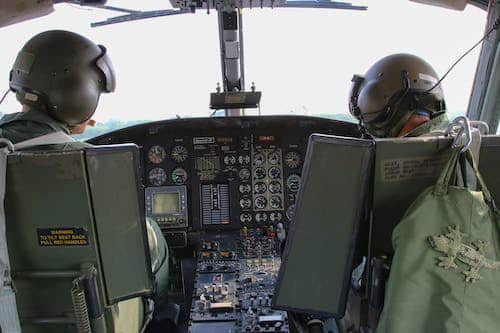When it comes to flying, helicopter pilots face a unique set of risks and challenges. Whether flying for commercial purposes, rescue missions, or leisure, it’s essential for helicopter pilots to have the right insurance coverage. Understanding the ins and outs of “Insurance for Helicopter Pilots” is not just about mitigating risks; it’s about peace of mind for the pilot and their families. In this comprehensive guide, we’ll explore the various aspects of insurance for helicopter pilots, offering valuable tips and insights to help you navigate this essential protection.
Best Insurance for Helicopter Pilots
Helicopter flying is inherently different from operating other aircraft, such as airplanes. The risk profile is distinct due to factors like low altitude flight, landing in unprepared areas, and the complexity of the machine itself. Consequently, “Insurance for Helicopter Pilots” needs to be tailored to address these unique risks.
Types of Insurance for Helicopter Pilots
- Liability Insurance: This is a must-have for any pilot. It covers damage or injury to third parties, protecting you from the financial fallout of accidents or incidents.
- Hull Insurance: This covers physical damage to your helicopter. Given the high value of helicopters, this insurance is critical to protect your investment.
- Personal Accident Insurance: This covers the pilot in case of injuries or death while operating the helicopter. It’s an essential consideration, especially for pilots who fly regularly.
- Passenger Liability Insurance: If you’re flying with passengers, this insurance covers injuries or damages they might sustain during the flight.
Factors Influencing Insurance Premiums:
Several factors can influence the cost of “Insurance for Helicopter Pilots.” These include the pilot’s experience, the type of helicopter being flown, the nature of flights undertaken (e.g., commercial, rescue, leisure), and the geographical locations covered. Experienced pilots with a clean safety record often enjoy lower premiums.
Tips for Choosing the Right Insurance:
- Assess Your Needs: Understand the types of missions you fly and the risks involved. This will help you determine the right coverage.
- Shop Around: Don’t settle for the first quote. Compare offers from different insurance companies to find the best deal.
- Read the Fine Print: Insurance policies can be complex. Make sure you understand the terms, conditions, and exclusions.
- Consider a Specialist Broker: A broker experienced in aviation insurance can offer invaluable advice and help you find a policy that best suits your needs.
- Stay Updated: Keep your insurance updated with any changes in your flying habits or the helicopter itself.
Why “Insurance for Helicopter Pilots” is Different
Helicopter pilots often undertake missions that are more varied and potentially riskier than those of fixed-wing aircraft. For example, helicopters are frequently used in challenging environments like offshore operations, mountain rescues, or urban areas. These scenarios demand a specialized insurance approach.
The Role of Training and Safety in Insurance
Insurance companies often offer better terms to pilots who regularly engage in training and adhere to strict safety protocols. Continuous education and a commitment to safety can not only reduce the likelihood of accidents but also lower insurance premiums.
Conclusion:
In conclusion, navigating the complex landscape of “Insurance for Helicopter Pilots” requires a careful and informed approach. As we have seen, helicopter pilots face unique risks due to the nature of their operations, whether they are flying for commercial, rescue, or leisure purposes. The insurance options available to them, including liability, hull, personal accident, and passenger liability insurance, are tailored to mitigate these risks and provide comprehensive protection.
When choosing the right insurance policy, helicopter pilots must consider several key factors. These include the type of flying they do, the geographical areas they cover, and their level of experience. It’s important to balance the need for adequate coverage with the cost of premiums, keeping in mind that factors like flying frequency, helicopter model, and personal flying history can significantly influence insurance rates. Additionally, pilots should not overlook the benefits of engaging with specialist brokers who can offer tailored advice and help find the most suitable coverage.
Moreover, the role of continuous training and strict adherence to safety protocols cannot be overstated. Not only do these practices ensure safer flying conditions, but they also have a favorable impact on insurance premiums. Insurers often provide better terms to pilots who demonstrate a commitment to ongoing education and safety, recognizing the reduced risk of accidents and claims.
Ultimately, “Insurance for Helicopter Pilots” is not just a regulatory requirement or a financial safeguard; it’s an essential aspect of a pilot’s career that supports their passion for flying. With the right insurance in place, pilots can take to the skies with confidence, knowing they are protected against the unexpected. This peace of mind is invaluable, allowing them to focus on the joys and responsibilities of helicopter flying, while ensuring that they, their passengers, and their aircraft are adequately covered.



